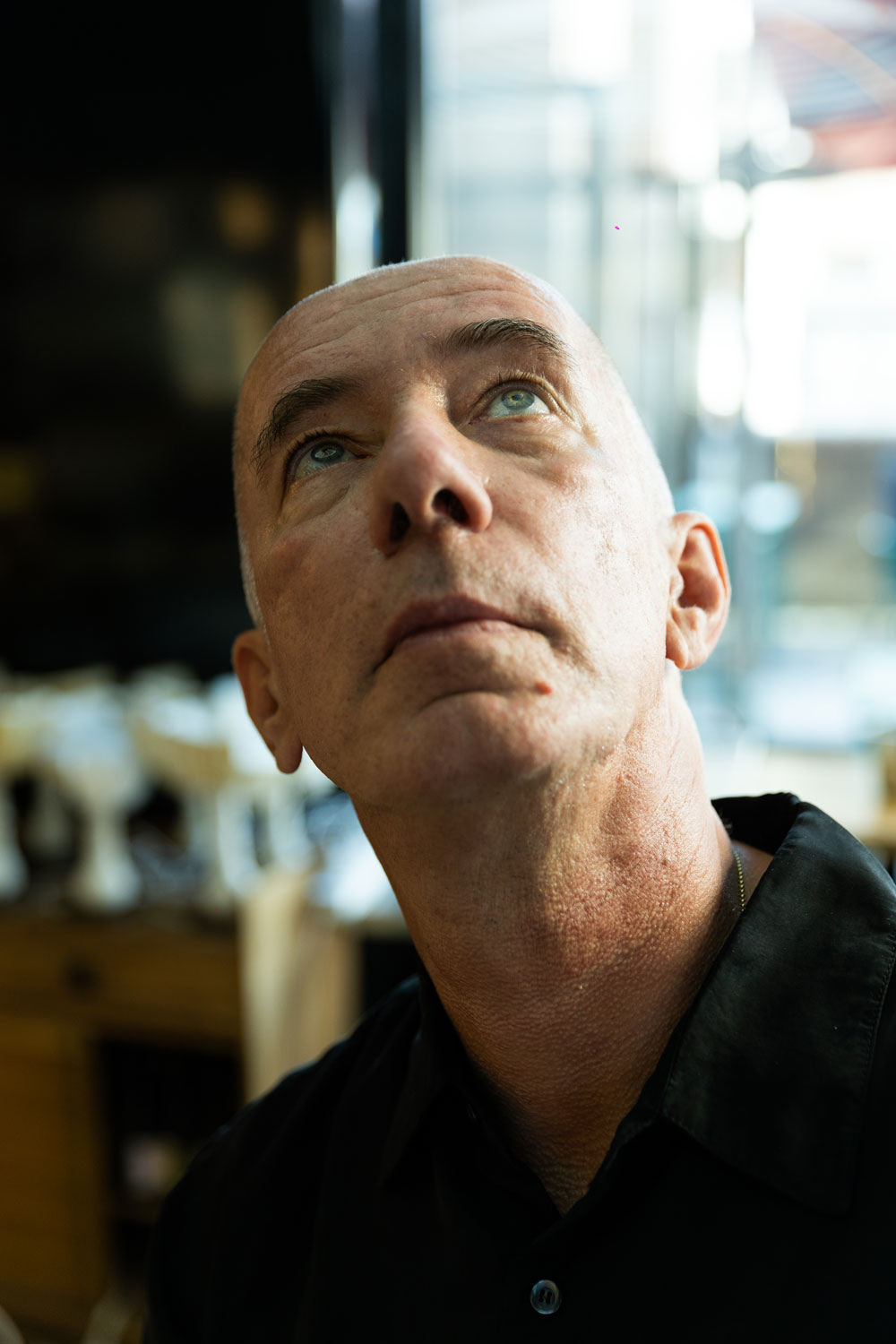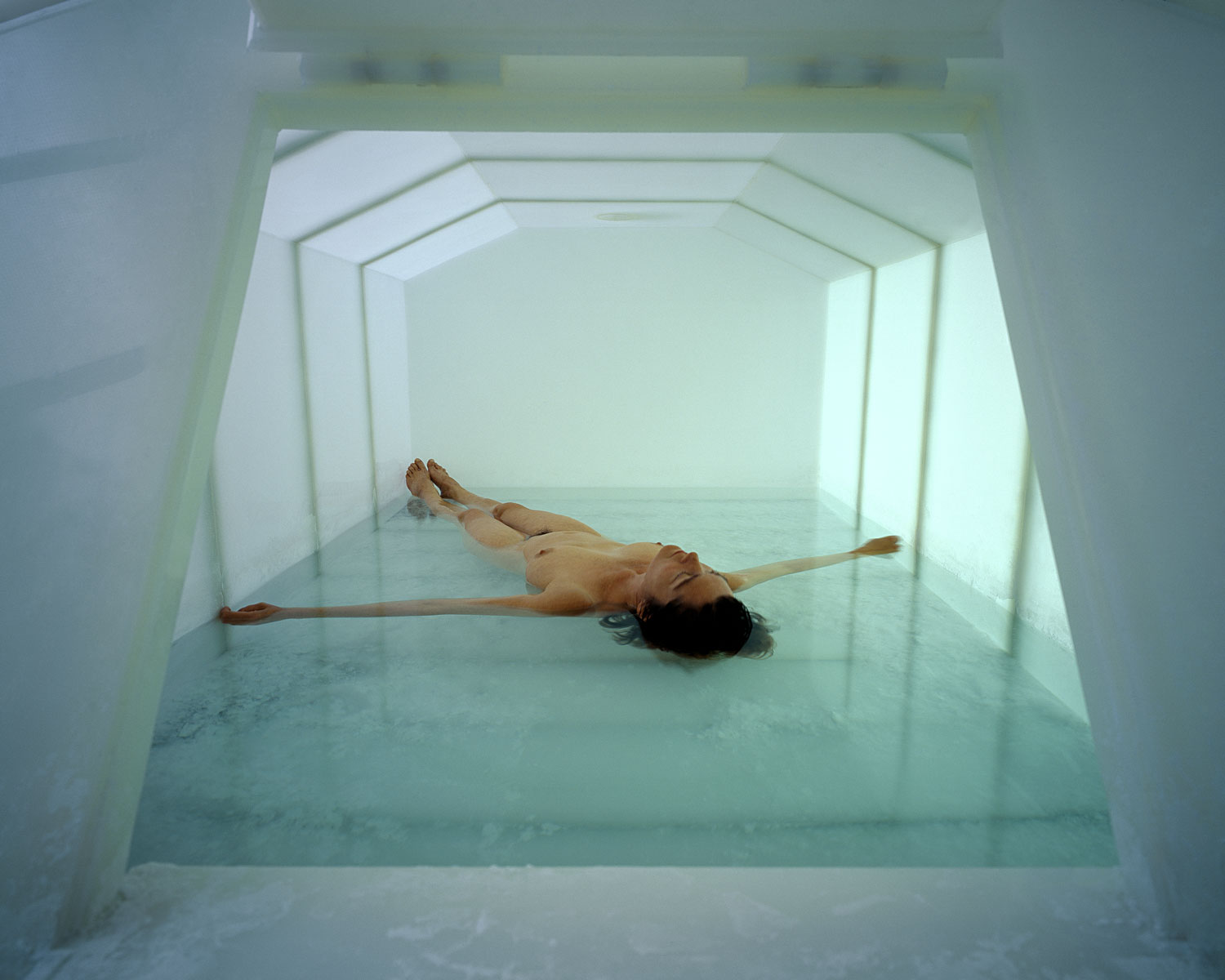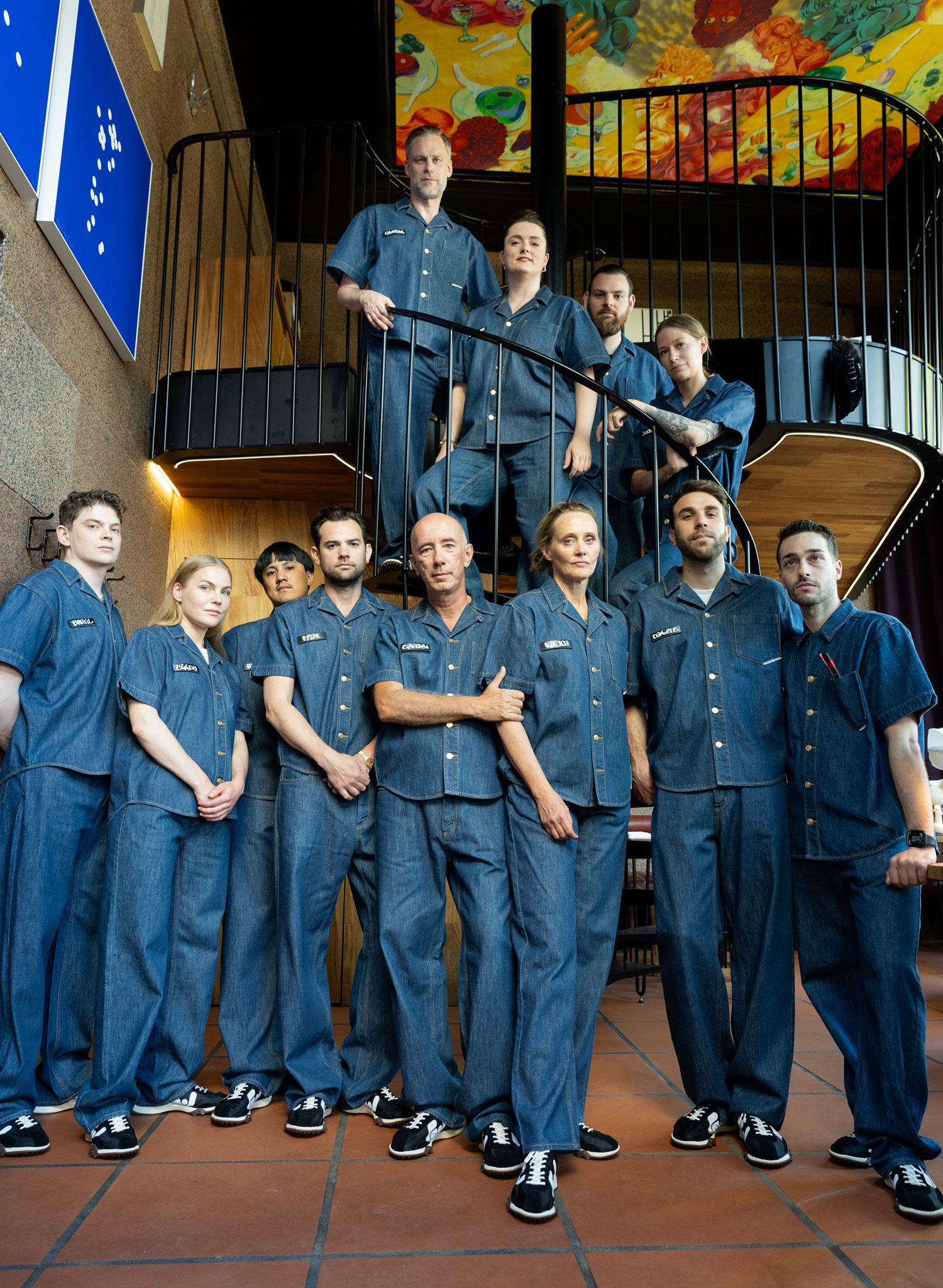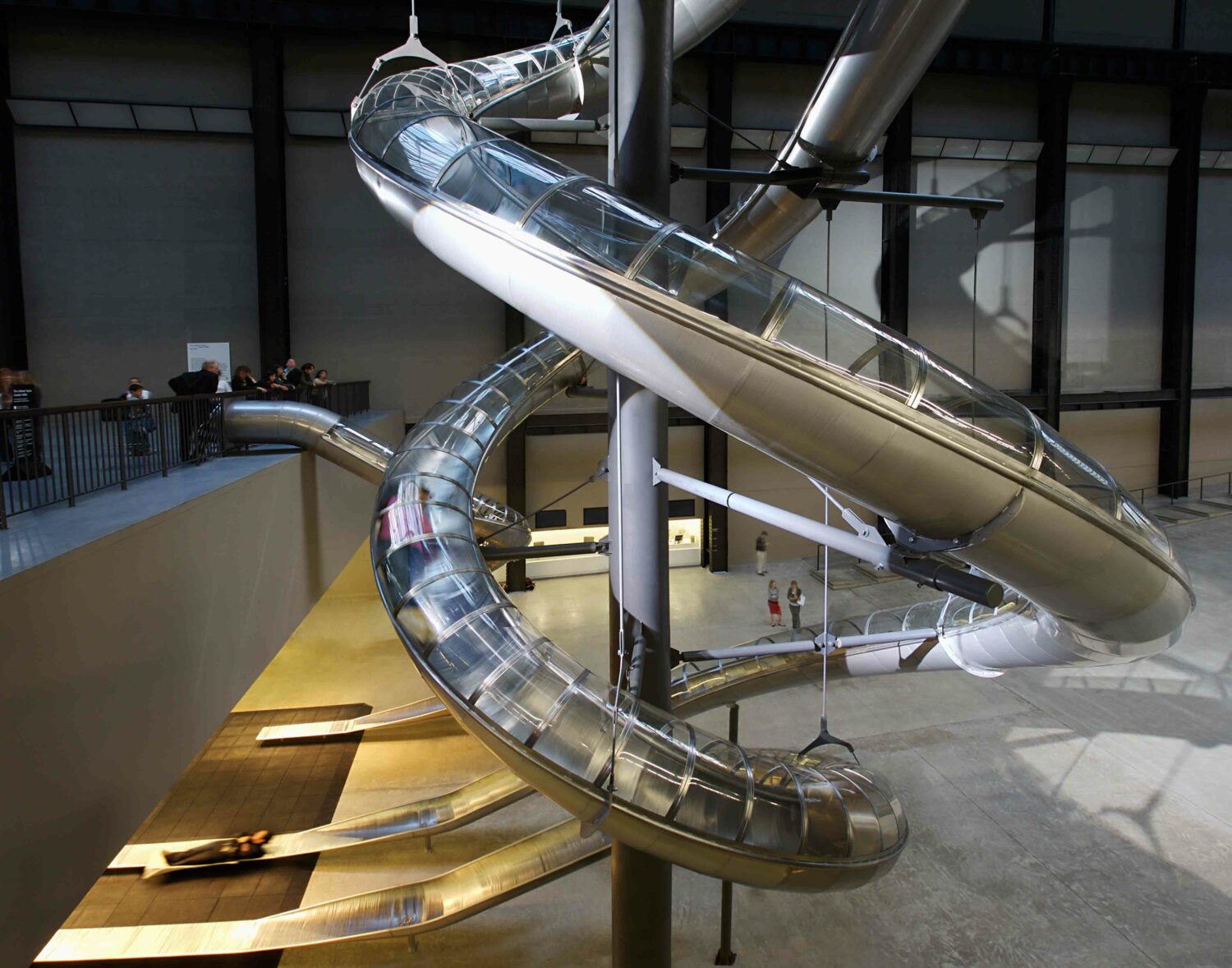SC Exclusive: Carsten Höller on Brutalist Eating and His New Fashion Collaboration
By Keshav AnandApproaching art making with a scientific curiosity, Carsten Höller investigates human behaviour through play — producing works often associated with relational aesthetics. Among the artist’s much-referenced interactive works is Psycho Tank, a sensory-deprivation chamber in which participants float weightlessly in a pool. In 2000, he famously installed a slide in the Milan office of designer Miuccia Prada, going onto put similar works in Tate Modern’s Turbine Hall years later. Höller manages to transform both the physical and psychological dimensions of social spaces with his installations.
More recently, in 2022, he opened the doors to his restaurant, Brutalisten, in Stockholm. The space — with a slanting interior to keep guests on their toes — is fitted with artworks by Dan Flavin and Carl Andre in reference to the menu, alongside a ceiling mural by American artist Ana Benaroya. For the summer of 2024, Höller has collaborated with Swedish fashion label EYTYS to create a new uniform for the Brutalisten team, styled with EYTYS’ latest sneaker release, Eros, a lightweight 70’s inspired racing flat. Sharing the announcement exclusively with Something Curated, Höller speaks with Keshav Anand.

Keshav Anand: I understand you trained as a phytopathologist — how did the transition to artist happen?
Carsten Höller: I have so many answers to this question — I suppose my answer depends a bit on the day. I studied Agricultural Sciences and then pursued a PHD in Phytopathology, working with insects, learning how they communicate. Then I did another thing after, called habilitation, where you write a number of scientific papers. And then I thought, it’s not really getting better than this. The research part was getting less and less and I was doing more teaching and fundraising, looking for grants. I felt I had done the best I could in my science career. And I’ve always thought, it’s a very nice thing to be able to change your life — if you can become somebody else in the middle of it. And so I decided that’s what I would do.

KA: How was the idea for Brutalisten born?
CH: I was dissatisfied with the kind of food I got in most places — I mean, you can get great food in a lot of places but they all do the same thing in the way that they try to combine different ingredients, and try to make something better out of the combination. But I believe that just working with one ingredient offers a more interesting approach. It’s enough. You can really find out how this ingredient tastes, instead of meddling too much. So Brutalist food is really just cooking with one ingredient.
I am very happy when something seasonal becomes available — say the first porcini mushrooms for instance, I am really longing for it. And I don’t need garlic and butter. I just want this mushroom. So if you cook it in a Brutalist way, you only add water and salt to get an amazing result and you can satisfy your craving for the seasonal ingredient in a much better way. Most people who come to my restaurant, they say the same thing, “I got that it was a kind of conceptual restaurant but I had no idea the food was so good!” Come and eat with me, I’ll show you.

KA: Can you tell us about the new collaboration between Brutalisten and EYTYS, launching this summer?
CH: Max Schiller, the Creative Director of EYTYS, is a devoted Brutalist eater. He loves to eat Brutalist food and when I saw him cooking for the first time I observed — he’s a good chef — he likes to cook with few ingredients. And when I opened the restaurant, he was there all the time and just loved it. We really became friends through the restaurant and then we hosted a party together for EYTYS — and I was dissatisfied with how our waiters and chefs were dressed, in all black. So Max and I started working on a collaboration. He came up with the idea of using this specific kind of denim, recommended to us by a Japanese friend who is a real denim nerd. So it’s like a uniform we did, which makes a lot of sense in the context of the restaurant.

KA: Changing pace for a moment, The Double Club is an all time favourite work of mine — what inspired this itinerant project?
CH: The London one is the original Double Club but really, the idea is just that you have two different entities of sorts together at the same time and in the same place. We’ve done three Double Clubs now — London was like an eight month project, and then we did a three night one in Miami, and more recently, we did a two nights and three days one in Los Angeles. But they were all very different. The one in London was about Congolese culture meeting, let’s say, Western culture.
The one in Miami was in a big indoor space which we kept completely black and white, to the smallest detail, and then we had a big outdoor space which was very colourful with lots of lights. And then the one in LA was about dividing the space, and dividing half of it again, and then the resulting quarter again in the middle, and so on, until you’re existing in a mathematical formula. So all very different but the same in the sense that they were all basically music clubs which try to make things happen in parallel in the same place, which you normally experience as being separate.

KA: Can art ever get too close to life?
CH: I think art should be as close to life as possible. It’s a language. You have to learn; you have to be able to speak it. It’s something that is evolving, not static, obviously. It’s a part of life. I don’t even think it’s possible to separate it. But for me, I like it to be applicable in some way. I like it to be experiential. To give you an experience that you might not have otherwise. It’s not something you can download or understand from seeing an image of it because it’s not just something to look at.
In my restaurant it’s something you can eat. In The Double Club, it’s something you can hear. In exhibitions that I do, it’s very often that you have to bring yourself in as a whole. You then create very specific experiences depending on the type of person you are. But I give you the tools to make these experiences.

KA: And what are you currently reading?
CH: At the moment, I am reading Murakami, whose work I’ve never read before. It’s actually quite nice and pretty absurd. And a book that came out in 1966 by John Fowles, called The Magus. I read a lot. I’m about to start Albert Camus’ The Myth of Sisyphus. What I want from a good book is a different viewpoint on things. Something that makes you think, “Oh, that’s how it could be.” I try to do this with my art too.
Feature image: Carsten Höller with Max Schiller. Photo: Colin Svensson